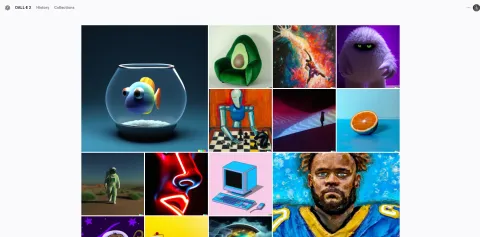OpenAI has two entities: a non-profit organization called OpenAI Incorporated and a for-profit company called OpenAI Limited Partnership. The non-profit oversees the vision and governance of OpenAI, while the for-profit develops and deploys AI products and services. Both entities share the same mission and values.
One of the main goals of OpenAI is to create artificial general intelligence (AGI), which is AI that can perform any intellectual task that humans can. To achieve this, OpenAI conducts cutting-edge research on various aspects of AI, such as natural language processing, computer vision, reinforcement learning, generative models, and neural networks.
Some of the notable projects and products of OpenAI are:
- GPT-4: A large-scale language model that can generate coherent and diverse text from any prompt. GPT-4 is the fourth and most advanced version of the Generative Pre-trained Transformer (GPT) series, which started with GPT-1 in 2018. GPT-4 can also answer questions, write essays, compose emails, create code, and more.
- DALL·E 2: An image generation system that can create realistic and artistic images from a text description. DALL·E 2 is an improved version of DALL·E, which was introduced in 2021. DALL·E 2 can combine concepts, attributes, and styles in novel ways, as well as perform outpainting and inpainting tasks.
- ChatGPT: A conversational model that can interact with humans in a natural and engaging way. ChatGPT uses GPT-4 as its backbone and adds additional features such as dialogue management, emotion detection, and personality modeling. ChatGPT can also admit its mistakes, challenge incorrect premises, and reject inappropriate requests.
- CLIP: A vision system that can learn from natural language supervision. CLIP stands for Contrastive Language-Image Pre-training, and it is a method of training a neural network to recognize images by using text captions as labels. CLIP can perform various tasks such as image classification, object detection, face recognition, and style transfer.
OpenAI is committed to ensuring the safety and responsibility of its AI systems. It follows a set of principles and practices to prevent harmful or unethical outcomes, such as:
- Removing violent, hateful, or adult content from the training data and the generated outputs.
- Limiting the ability to generate photorealistic faces of real individuals or public figures.
- Implementing content policies and monitoring systems to curb misuse or abuse of the AI products and services.
- Deploying AI systems in phases based on learning from real-world use and feedback.
- Publishing research papers and blog posts to share the findings and challenges of developing AI.
OpenAI also offers an API platform that allows developers and users to access its latest models and products. The API platform provides documentation, examples, safety guides, and pricing information. The API platform also supports various programming languages such as Python, JavaScript, Ruby, Go, and more.
OpenAI is always looking for talented and passionate people to join its team and contribute to its mission. OpenAI has various roles in research, engineering, product development, design, operations, policy, communications, and more. OpenAI also values diversity and inclusion in its culture and work environment.
If you are interested in learning more about OpenAI or applying for a job at OpenAI, you can visit their website at https://openai.com/.






